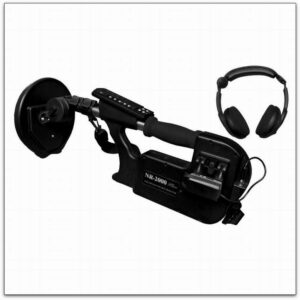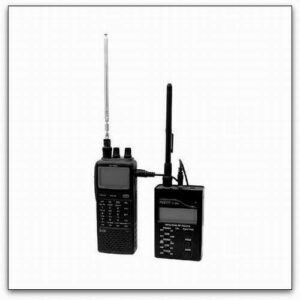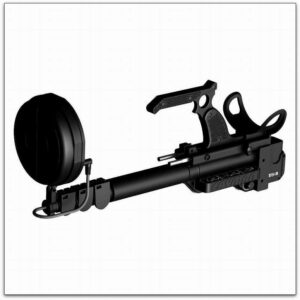Opis
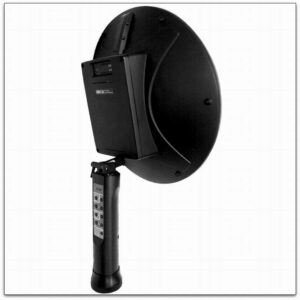
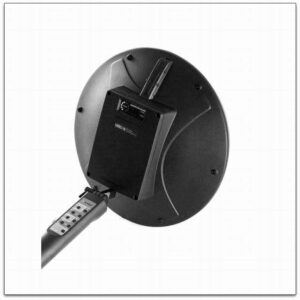
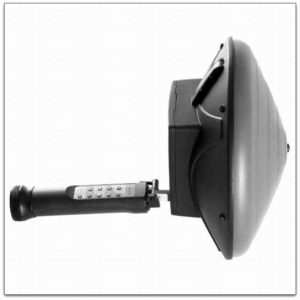
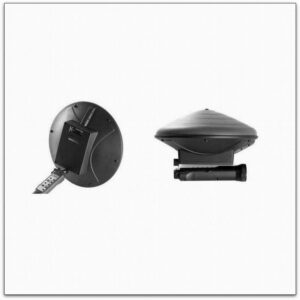
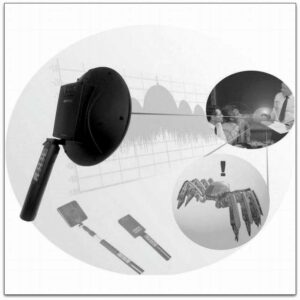
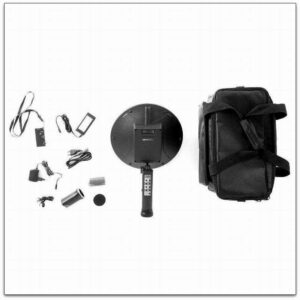
The non-linear junction detector LORNET 36 is the irreplaceable device at carrying out of operational and search activities in premises with high density of subjects containing electronic devices and also by search of small-sized electronic devices (1х2cm). The device is also effective during remote analysis of suspicious objects for the presence of electronic components at a safe distance of 3-5 meters.
Main competitive advantages:
– Thanks to high frequency of probing signal and effectively implemented narrow diagram of antenna directivity Lornet 36 detects semi-conductor elements hidden by various materials (can be detected through the cracks, unearthed screens, through reflection from smooth surfaces, SIM-card is detected from distance in 1m etc.).
– Narrow beam of directivity diagram and presence of the laser index allows carrying out spatial selection of various semi-conductor elements with split-hair accuracy that is extremely important characteristic at the analysis of suspicious subjects within safe distance.
– Automatic and manual changes of capacity of probing signal in pulse mode.
– Usage of the newest technologies and materials, ergonomics. Convenient bodies of indication and management, simple in work, small weight.
– Electromagnetic influence on the operator is essentially lowered.
– Wireless head-phones.
– High frequency range (3600MHz) gives opportunity to spatially select the semiconductor elements location.
– For efficient identification of artificial and natural semiconductors a listening through a built in speakerphone or headphones can be used after AM decoding of the signal in continuous mode. – Lornet is equipped with an automatic system of protection against centered jamming by criterion of a minimum noise in the reciever path of the 2nd harmonic.
– Electromagnetic radiation towards the operator is many times less than one setted by the Regulator.
Technical characteristics:
Type of probing signal:
– pulse modulated carrier with a duty cycle of 0.6% (Pulse)
– pulse modulated carrier with a duty cycle of 5.0% (CW)
Probing signal frequency: 3581.5…3607.5MHz
Maximum power with duty cycle of 0.6% (Pulse): not less than 18W
Maximum power with duty cycle of 5.0% (CW): not less than 12W
Power control range: 22dB from maximum value, 11 steps
Receiver tuning frequency at 2nd harmonics: 7163-7215MHz
Receiver tuning frequency at 3rd harmonics: 10744.5…10822.5MHz
Transmittance antenna gain at 3600MHz: not less 20dB, beam angle by -3dB level not more than 16o.
Receiver sensitivity: -110Bm (the 1st LED lights up).
Receiving path dynamic range:
– 30dB (20dB – LED indicator range, 10dB – attenuator range at receiver input adjusting by ATT button).
Laser lightning of the center of directivity diagram: yes
Time of continuous operation with a Li-Ion battery at the max radiated power:
– Pulse mode: not less than 3 hours
– CW mode: not less than 2 hours
Dimensions:
– in working conditions: 47,7х30,3х22,7cm
– transportable conditions: 30,3х30,3х23cm
Weight of the device/full set: 1.4kg/3.6kg
Operating conditions:
– ambient temperature: +5oC+40oC
– pressure: 450…800mm mercury.
Non Linear Junction Detectors:
In 1970s Americans detected wires in the concrete columns of the American Embassy in Moscow. The bugs were installed during the construction of the building, and there was no other way to extract them except for complete destruction of the building. One shouldn’t neglect the importance of correct frequency tuning of NLJD equipment for different types of search environment (for instance, concrete walls). Bugs or wires (as covert listening devices are commonly called) can be set up deep in concrete columns and they still will be transmitting signals. Non-linear junction detectors (NLJD) are devices designed for search and detection of different types of covert listening devices, various electronic appliances and transmitters comprising of semiconductors. The principle of NLJD equipment operation is based on emission of high radio frequency energy in an area. Detectors have a sensitive receiver designated for reception of objects’ echo signals which, for operator’s convenience, are marked down with sound or displayed on graphical user’s interface. Depending on the model, non-linear junction detectors are capable of detecting almost any electronic appliance in any operational mode: active, stand-by, switch-off. The designation of such devices consists in detection of radio microphones, microphone amplifiers, dictophones in premises (walls, floors, ceilings, furniture, etc.). Non-linear junction detectors acquired a reputation as perfect means of counter-espionage, as embassies and other diplomatic posts are known to be most popular targets for eavesdropping equipment. Specific models of NLJD are used by the police in search for weapons during events involving great masses of people. Detectors are used for providing location secure from covert listening devices in different organizations. Non-linear junction detectors can serve multiple purposes and have a wide range of implementation, starting from ground detectors up to equipment used for detection of mobile phones. Wide range of NLJD is presupposed by the type of material or surface for search operations – ground detectors are preferable for object detection in soil, portable detectors tuned to appropriate frequency are better in search within wooden furniture. Non-linear junction detectors have a very peculiar designation, therefore their usage is conditioned by goals set by customers. Taking into account great variety of NLJD equipment there is a specific model for any purpose you may require. Current NLJD products line include models for various applications.
Why Non Linear Junction Detectors?
NLJD technology has proven to be most effective in detection of semiconductors containing multiple layers of silicon, a P-Type and an N-Type. The point where they meet is called a Non Linear Junction.Non Linear Junction also appears in nature: dissimilar metals in contact with one another; the rust on metals resulting from corrosion.


